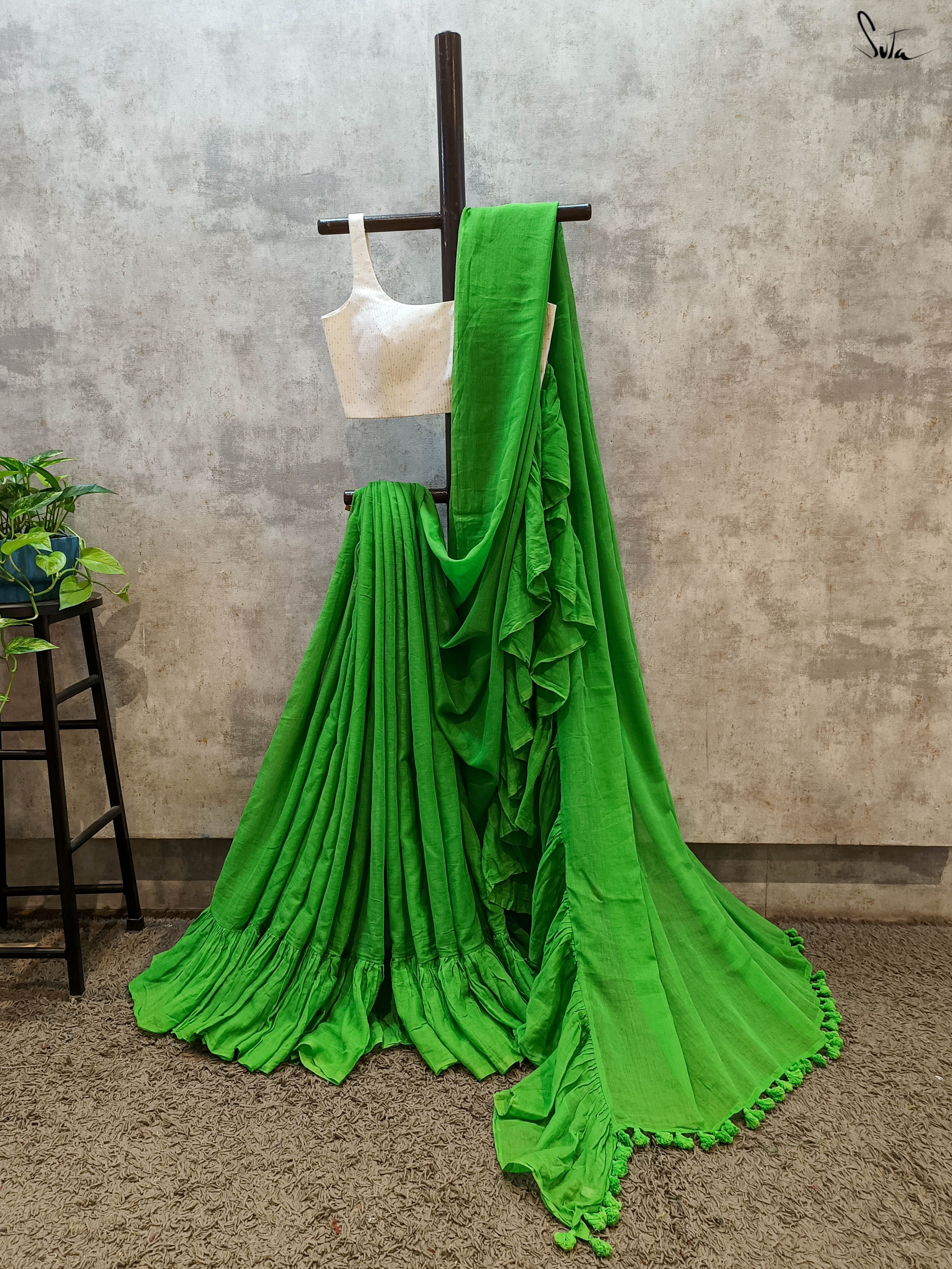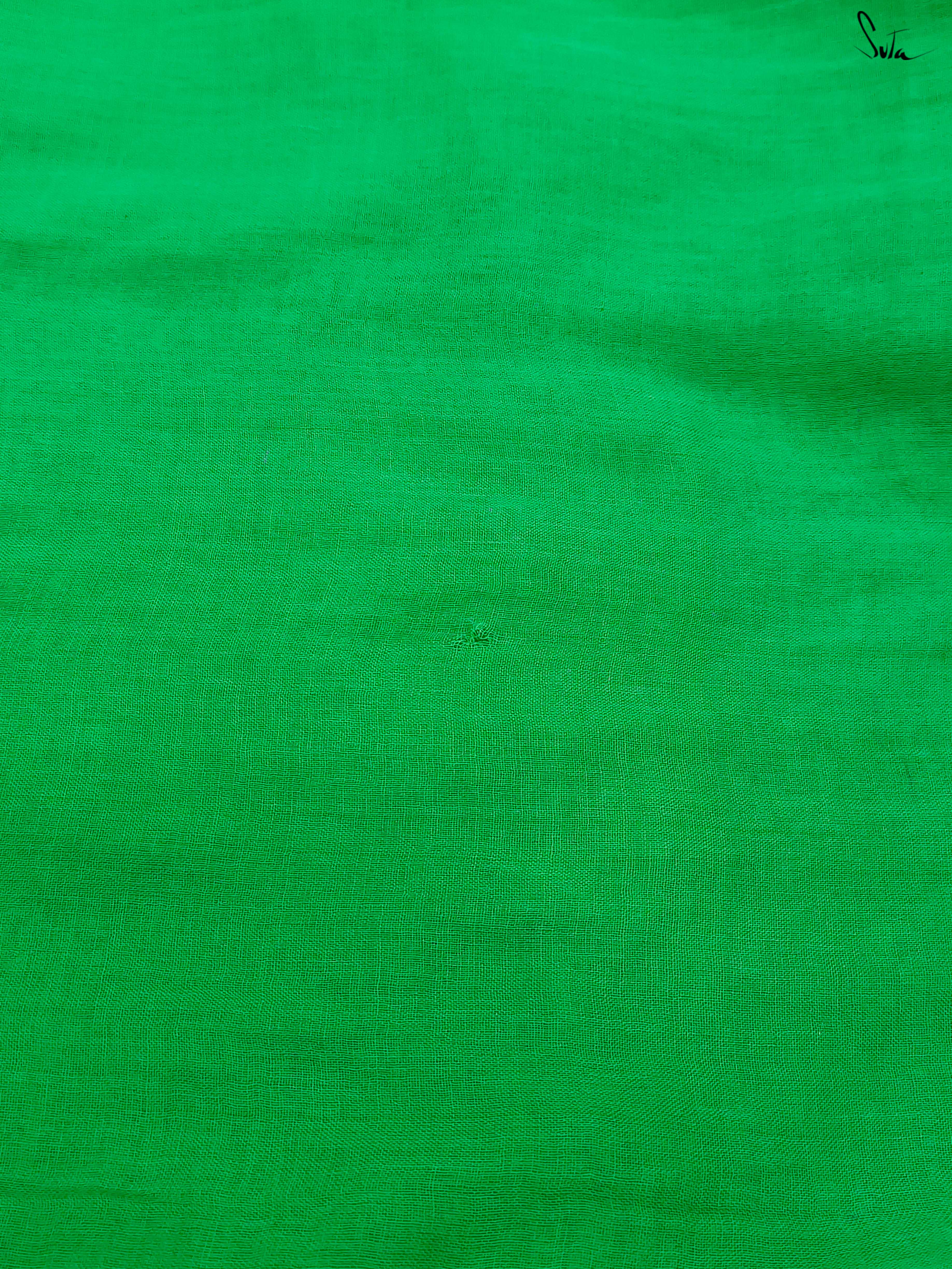





Parakeet Wings SG1 (garage_saree)
9% off
Kindly empty your cart to purchase a Suta product OR checkout with the existing Relove products of your cart and then, shop Suta products.
SB3G10
Buy 3 & Get FLAT 10% OFF
SB5G15
Buy 5 & Get FLAT 15% OFF
Free shipping on domestic orders above Rs. 1,950
Hassle-free 10 days return & exchange
Cash on delivery is available
- Details
- Description
Product Type: garage_saree
Length: 5.50 m (550.00 cm) ; Width: 1.19 m (119.38 cm)
Blouse Piece: No
Defect : Weaving defect ; Position of defect from pallu : 3mtr 30cm ; Position of defect from top Selvedge : 77cm ; Length of defect: 1cm
Wash Care:
1. Hand wash separately in cold water and salt
2. Don't soak it in water for more than 5 minutes
3. Medium iron
Blouse: The blouse paired with the saree is called Moonstone Bling
Fabric: Mul Cotton
Disclaimer: The pictures are clicked in daylight. Color may vary slightly from the image due to the screen brightness.
NOTE : Fall and edging is not required for a ruffle saree. You can drape this saree like a regular saree as it is not pre stitched.
Note: This product cannot be returned or exchanged
What You will Recieve: 1 garage_saree
Ruffles are the perfect addition to the incredibly soft and light made-in-heaven Mul fabric. These pretty ruffle sarees are an amazing addition to your wardrobe because they offer the perfect mix of elegance and spunk.
The mul cotton is what we call ‘made in heaven’ at Suta. Known in West Bengal as mul mul, the fabric is what can be categorised as muslin cotton. It is believed that this fine method of weaving cotton can be traced back to even before the Indus valley civilization. What makes this fabric special is the almost magical process of weaving it. Cotton fibres are separated and spun into strong threads. The lightest and the most delicate fibres are separated and are then spun into muslin thread. These are then woven into fabrics by skilled weavers. The history of muslin weaving is a beautiful chapter in the history of Indian textiles. The process of the yore was much more complex and involved many unique tools that look primitive but worked like magic. The upper jaw of a catfish was used to initially clean the cotton before spinning. To separate the lightest fibres, a Dhunkar (a bamboo bow) was used, which when strung in a distinctive way made the lighter fibres rise above the heavier ones. This process gave the title ‘woven air’ to the muslin fabric.
Product Type: garage_saree
Length: 5.50 m (550.00 cm) ; Width: 1.19 m (119.38 cm)
Blouse Piece: No
Defect : Weaving defect ; Position of defect from pallu : 3mtr 30cm ; Position of defect from top Selvedge : 77cm ; Length of defect: 1cm
Wash Care:
1. Hand wash separately in cold water and salt
2. Don't soak it in water for more than 5 minutes
3. Medium iron
Blouse: The blouse paired with the saree is called Moonstone Bling
Fabric: Mul Cotton
Disclaimer: The pictures are clicked in daylight. Color may vary slightly from the image due to the screen brightness.
NOTE : Fall and edging is not required for a ruffle saree. You can drape this saree like a regular saree as it is not pre stitched.
Note: This product cannot be returned or exchanged
SKU: SUTAGRG1243
What You will Receive: 1 garage_saree
Ruffles are the perfect addition to the incredibly soft and light made-in-heaven Mul fabric. These pretty ruffle sarees are an amazing addition to your wardrobe because they offer the perfect mix of elegance and spunk.
The mul cotton is what we call ‘made in heaven’ at Suta. Known in West Bengal as mul mul, the fabric is what can be categorised as muslin cotton. It is believed that this fine method of weaving cotton can be traced back to even before the Indus valley civilization. What makes this fabric special is the almost magical process of weaving it. Cotton fibres are separated and spun into strong threads. The lightest and the most delicate fibres are separated and are then spun into muslin thread. These are then woven into fabrics by skilled weavers. The history of muslin weaving is a beautiful chapter in the history of Indian textiles. The process of the yore was much more complex and involved many unique tools that look primitive but worked like magic. The upper jaw of a catfish was used to initially clean the cotton before spinning. To separate the lightest fibres, a Dhunkar (a bamboo bow) was used, which when strung in a distinctive way made the lighter fibres rise above the heavier ones. This process gave the title ‘woven air’ to the muslin fabric.
No returns or exchange applicable on Suta Garage products
Country of Origin: India
Packed By: Suta Pvt. Ltd.
Registered Address: Om ShivAmbika Co-Op Hsg Soc, Kalina, Santacruz East, Mumbai-400098
Choose options






9% off
